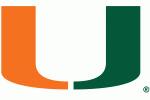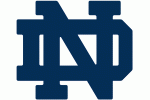We continue our analysis of how teams with "OAD" recruits perform in the later rounds of the NCAA tournament. Or, how they don't.

On Tuesday, we started a three part series exploring the success of teams that signed "one-and-done" players. That is, players who come to college and only play one year before leaving for the NBA. In that article, we looked at what schools have actually made OADs a focal point of their recruiting strategy. We then examined early-round success in the NCAA Tournament. I highly recommend you read that before you continue with this.
Today we’ll start with some data from the past 12 Elite Eights, Final Fours, and Championship games. The intent is to identify successful or unsuccessful trends as they pertain to teams that have not been shy about signing OAD talent.
Remember, this includes the 2016-2017 season. If a player has already signed an agent they are officially a "one-and-done". That means at the time of this post, Tony Bradley is not an OAD.
Elite Eight Success
In the 12 years since the NBA rule was put in place, there have been 96 teams from 39 different schools that earned a trip to the Elite Eight. Obviously some schools have made multiple Elite Eight appearances. Of those 96 teams, 22 of them have had at least one OAD on their roster. Just above 21% of overall Elite Eight participants.
Remember from Part 1, there have been 87 total D-1 teams that have signed an OAD recruit. Sixty five of those teams made the tournament. This means that 25% of overall OAD teams have reached the Elite Eight, and 34% of NCAA tournament teams that had OAD signees.
I’ll let you decide if that’s low, high, or worth the investment in one-year players. I’m sure there are arguments both ways. Personally, for as much fanfare as they get, I would’ve expected that number to be a little higher. However, there is not a set amount of one-and-done players each year, and the amount of teams with OADs fluctuate.
Look at this table. It’s a breakdown of every school who has appeared in the Elite Eight since 2006, the number of times that school has appeared, and the number of teams that have had an OAD on them.
|
School |
Elite 8 |
Teams w/ OAD |
School |
Elite 8s |
Teams w/ OAD |
|
FL |
7 |
1 |
Michigan |
2 |
0 |
|
UNC |
7 |
1 |
Wisconsin |
2 |
0 |
|
Kansas |
6 |
3 |
Notre Dame |
2 |
0 |
|
UK |
6 |
6 |
Gonzaga |
2 |
1 |
|
Louisville |
5 |
0 |
Davidson |
1 |
0 |
|
MSU |
4 |
0 |
George Mason |
1 |
0 |
|
UCONN |
4 |
0 |
Georgetown |
1 |
0 |
|
Arizona |
3 |
2 |
Kansas State |
1 |
0 |
|
Syracuse |
3 |
1 |
LSU |
1 |
1 |
|
Duke |
3 |
1 |
Missouri |
1 |
0 |
|
Memphis |
3 |
2 |
Pitt |
1 |
0 |
|
Villanova |
3 |
0 |
Tennessee |
1 |
0 |
|
Oregon |
3 |
0 |
VCU |
1 |
0 |
|
Ohio State |
3 |
1 |
WVU |
1 |
0 |
|
UCLA |
3 |
1 |
WSU |
1 |
0 |
|
Baylor |
2 |
1 |
Marquette |
1 |
0 |
|
Butler |
2 |
0 |
Dayton |
1 |
0 |
|
Oklahoma |
2 |
0 |
UVA |
1 |
0 |
|
Texas |
2 |
0 |
South Carolina |
1 |
0 |
|
Xavier |
2 |
0 |
Florida and UNC both have seven Elite Eight appearances, tied for most in all of college basketball over the past 12 years. That’s 14 total trips to the second Sunday of the tournament. Those 14 teams had a grand total of two OADs, Bradley Beal and Brandan Wright.
Kentucky and Kansas are next with six appearances apiece. Interestingly, of Kansas’ six trips to the Elite Eight, only three was with an OAD on the roster. That’s surprising considering that Kansas is tied for second (with Duke) with signing the most OADs during this time period.
Surprisingly, Duke, is pretty far down the list with only three Elite Eights in 12 years. Right below Louisville, UCONN, and Michigan State, who have a combined 13 appearances despite zero OADs on any of their Elite Eight teams.
That is not a small disparity in programs that regularly sign OAD talent and programs that do not. Only Kentucky truly bucks the trend, and their success is commendable. Their most recent visit was this past season, when they were memorably defeated by the equally talented, but more veteran Tar Heels. Luke Maye, the former 3-star walk-on, helped make sure of that.
No, I will never get tired of pointing this out at every possible opportunity.
Final Four Success
In that same time, 26 different schools have been responsible for 48 Final Four teams. Again, some schools have multiple appearances. Only 11 of those 48 teams have had an OAD on it. Same as with the Elite Eight appearances, I would have expected more than a 23% rate of overall participants.
On the other hand, those 11 teams account for 17% of the 65 NCAA teams mentioned above, and 12.6% of all OAD-centric teams in that same span. Not completely unsuccessful, but still below what I originally expected.
Especially when you consider that OADs aren't flaming out while trying to lead the Mercers and Lehighs of the world. Though, in Duke's case, they just flame out against Mercer and Lehigh. Make of that what you will.
Check out these numbers for the Final Four.
|
School |
# of FF |
Teams w/ OAD |
School |
# of FF |
Teams w/ OAD |
|
Kentucky |
4 |
4 |
Wisconsin |
2 |
0 |
|
UNC |
4 |
0 |
Georgetown |
1 |
0 |
|
Florida |
3 |
0 |
GMU |
1 |
0 |
|
MSU |
3 |
0 |
Gonzaga |
1 |
1 |
|
UCLA |
3 |
1 |
LSU |
1 |
1 |
|
UCONN |
3 |
0 |
Memphis |
1 |
1 |
|
Butler |
2 |
0 |
Michigan |
1 |
0 |
|
Duke |
2 |
1 |
Oklahoma |
1 |
0 |
|
Kansas |
2 |
0 |
Oregon |
1 |
0 |
|
Louisville |
2 |
0 |
South Carolina |
1 |
0 |
|
Ohio State |
2 |
1 |
VCU |
1 |
0 |
|
Syracuse |
2 |
1 |
Wichita State |
1 |
0 |
|
Villanova |
2 |
0 |
WVU |
1 |
0 |
Once again, only Kentucky has any regular success with OADs. Interestingly, every single Kentucky Final Four team had multiple freshmen in their starting rotation. They didn’t just rely on one main freshman star, but often started two or more. The same was true for Duke and Ohio State's Final Four teams. Six of those 11 OAD teams started multiple freshmen.
To be fair, UNC, Michigan State, Louisville, Florida, and UCONN haven’t relied on a single freshman to be their primary weapon during their visits to the semi-finals. Instead, they have found success in a much different manner.
Those programs have a combined 15 Final Fours since 2006. Those five schools account for 31% of Final Four teams over the last 12 years. None of their Final Four teams had a single OAD on the roster. Zero.
That doesn't exactly give credibility to the whole argument of "all you need is one great freshman".
One can also use Kansas an an interesting case study. Nine OADs have been Jayhawks, yet Kansas only has two Final Fours. Neither one of those Final Four teams had an OAD on its roster.
Interestingly, of those 11 Final Four teams, five have been coached by John Calipari (Four at UK and one at Memphis). Clearly he has figured this system out well enough to at least put his teams in position to win titles. They just don’t capitalize as often as one might expect considering the attention he and his program receive.
Regardless of your team affiliation or desire to sign the absolute top talent at your school, it’s hard to ignore the trend that has formed.
Championship Success
As we keep working through the bracket, the above trends carry over to the first Monday night in April.
Of those 11 teams that made the Final Four, seven were a #1 seed, two earned a #4 seed, one was a #8 seed, and of course there was Syracuse as a #10 seed last season. Six of those seven OAD-led top-seeded teams experienced the Championship game.
Below are those teams with their OAD players listed. Teams in bold tasted sweet, sweet victory. Players with an asterisk started the Championship game.
2007: Ohio State (Greg Oden*, Mike Conley*, Daequan Cook)
2008: Memphis (Derrick Rose*)
2012: Kentucky (Anthony Davis*, Michael Kidd-Gilchrist*, Marquis Teague*)
2014: Kentucky (James Young*, Julius Randle*)
2015: Duke (Justise Winslow*, Tyus Jones*, Jahlil Okafor*)
2017: Gonzaga (Zach Collins)
The major takeaway is only two teams with a one-and-done player have actually won the title. Those teams had to START three of them in order to be called champions. Very few programs can actually pull that off on any given year, much less every year.
The majority of those teams had multiple one-year players in their starting line-up. That 2014 Kentucky team actually started four freshmen. It is possible to achieve post season success using this model. However, the next natural question is to ask what was the composition of the rest of the starting line-ups?
For example, it was junior Isaac Humphries who almost caused UNC's demise this past March. Duke's title team had Quinn Cook to provide poise and leedership throughout the season. If a program is signing multiple OADs per year, it's hard to cultivate that experience. It may even force you into hard fought recruiting battles with powerhouses like Eastern Kentucky to find a viable point guard.
Moving along, all of that means 10 of the last 12 NCAA champions did not have a one-and-done on them. Who were those other Champions?
2006: Florida
2007: Florida
2008: Kansas
2009: UNC
2010: Duke
2011: UCONN
2013: Louisville
2014: UCONN
2016: Villanova
2017: UNC
The total number of OADs signed by those Champions since 2006 is 21.
Kansas has signed nine of those 21. So has Duke. Yet neither Duke nor Kansas had recruited a single one-year player before their 2008 or 2010 title runs. That 2008 Kansas team did not even start one freshman. Neither did that 2010 Duke squad.
More succinctly, 18 cumulative OADs between the Jayhawks and Blue Devils have resulted in one title --Duke's 2015 champs.
Florida, UCONN, and UNC, who all have multiple titles, have signed the remaining three. Each are credited with one apiece.
Louisville and Villanova have never signed a single OAD.
Obviously recruiting OADs has proven to be periodically successful for a variety of programs. However, after reviewing all of these numbers/data/stats it’s fair to question if they are as successful as the casual fan has been led to believe. Especially when compared to programs who have not made it a regular practice to sign one-year players.
Considering all the disappointment about losing out on Kevin Knox, I seriously find myself asking if chasing that kind of NBA-focused, OAD talent is truly worth the hassle. Every player is different. Each situation is more nuanced than the average fan realizes. Justin Jackson is a perfect example of a top-10 recruit that was the perfect fit for UNC.
Nonetheless, is it possible that the college landscape shifted to a point where (mostly) ignoring the Top-15 talent may actually bring more sustainable success at the collegiate level? In our haste to get caught up in the whirlwind of the recruiting nuclear arms race, have we missed an evolution that may not be an evolution at all? Instead we find programs finding abnormal levels of post-season success with predominantly three and four year players. Is that any different than the two decades prior to the NBA rule?
There likely is not an easy answer or solution, but every year the questions keep mounting.
Fortunately, the Tar Heels keep winning.
Next week in Part Three we’ll take a deeper look at what these numbers have meant for UNC, and what they may mean in the future for the Tar Heels.



















